Affiliate links on Android Authority may earn us a commission. Learn more.
Samsung Galaxy S10 troubleshooting guide
Published onMay 26, 2023
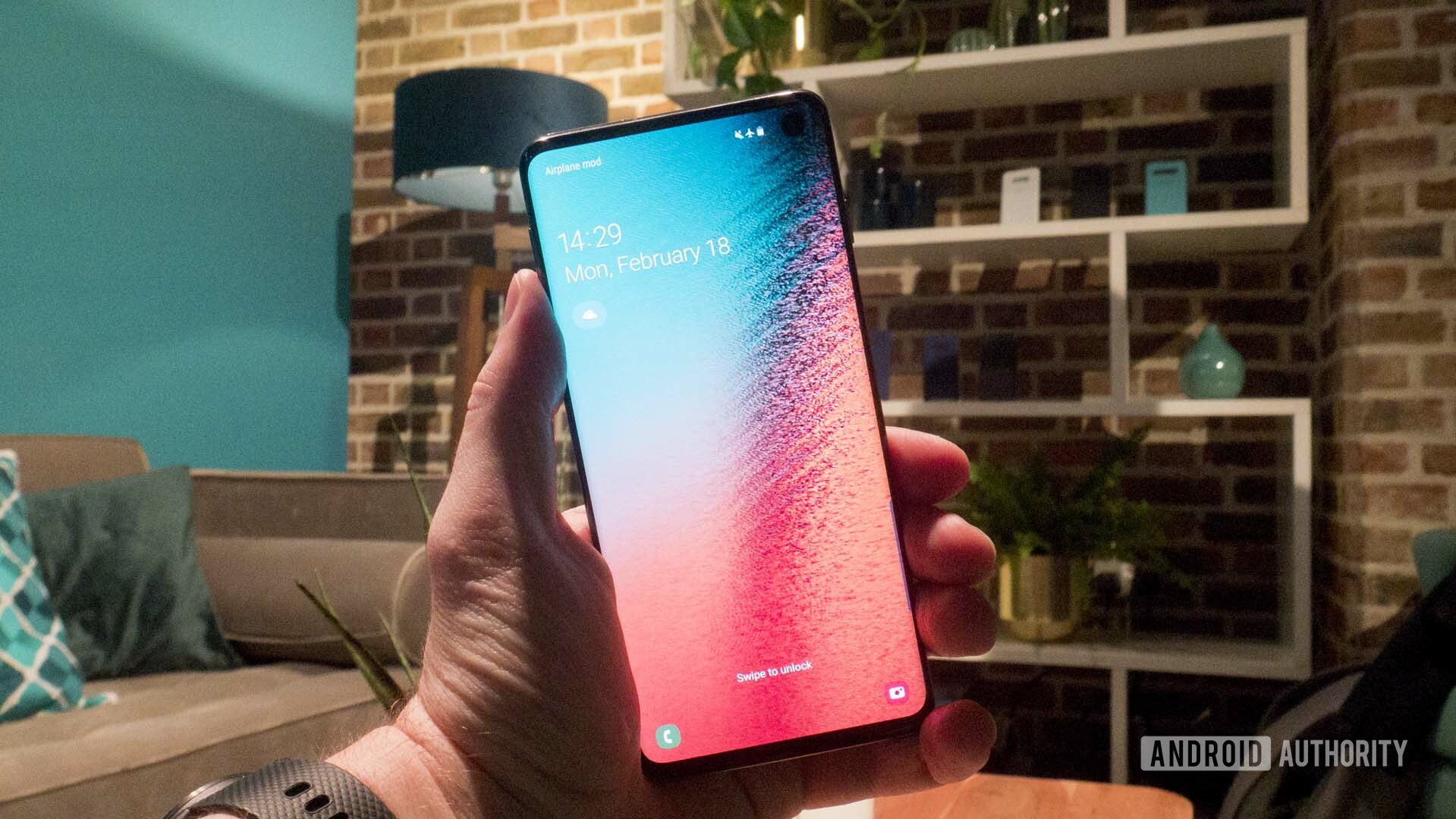
With the Samsung Galaxy S10’s big 6.1-inch display that’s nearly bezel-free, its powerful hardware, and its many useful features, it’s arguably one of the best all-around phones Samsung has ever made.
Once you purchase the Galaxy S10, you will likely not deal with any major issues. However, there’s always a chance that you might encounter a problem with the phone that might need to be addressed.
In this guide, we aim to answer the questions to any problem you might run into with a Galaxy S10, S10e, or Galaxy S10 Plus.
Editor’s note: Keep in mind that many of these problems are extremely rare and some of the troubleshooting tips below are general advice. In other words, don’t expect to encounter these problems if you buy a member of the Galaxy S10 family. This guide is simply here in case someone happens to run into issues.
Samsung Galaxy S10 display issues
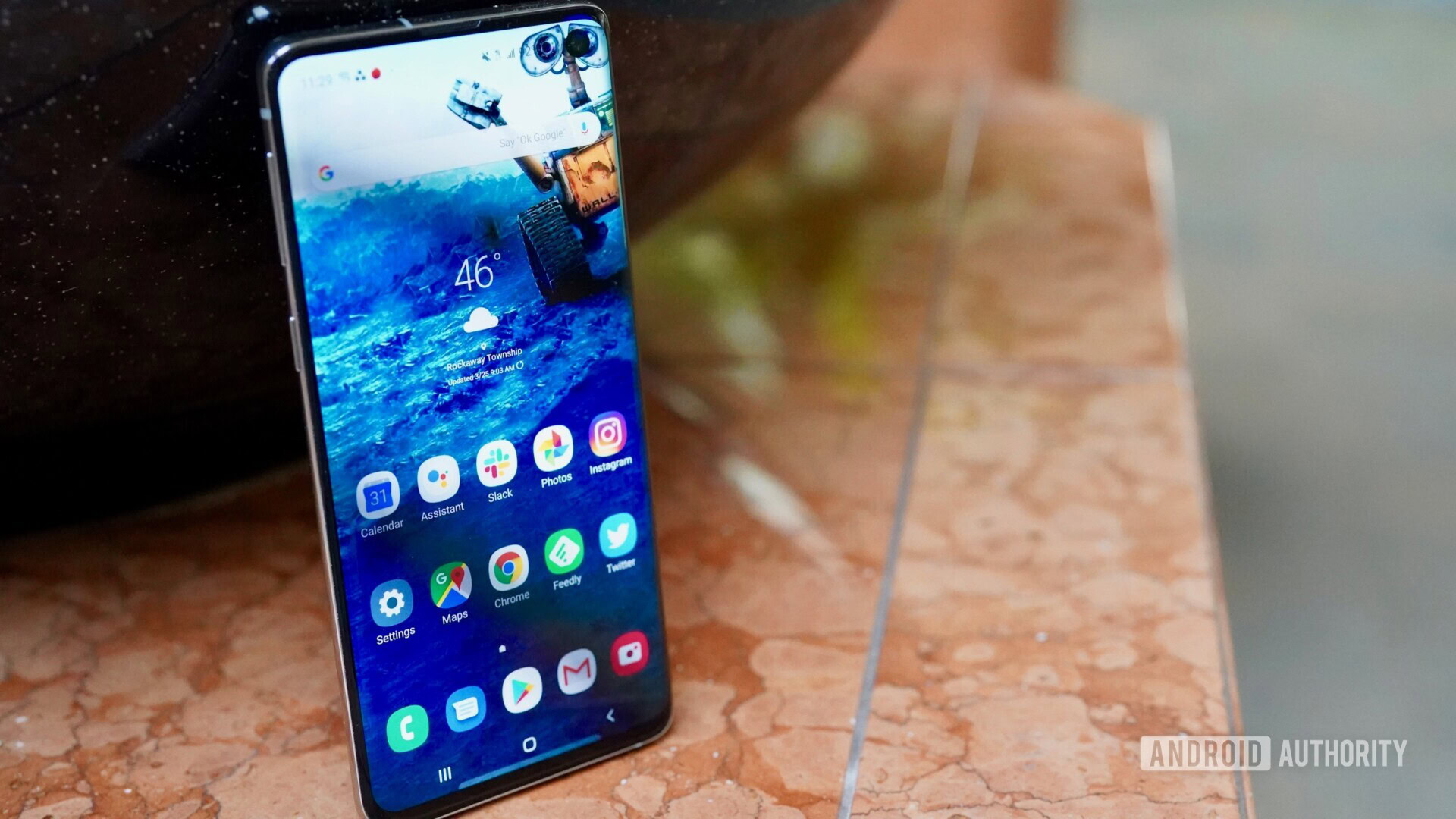
How to fix Galaxy S10 accidental touches
The Samsung Galaxy S10, as we mentioned, has a big display that has almost no bezels. As a result, some users have reported that if they touch the sides of the phone’s display, they accidentally might launch an app, or even open the Edge apps panel without meaning to do so. Thankfully, Samsung has anticipated this problem and has included a way to keep these issues from happening again.
Just follow these simple steps:
- First, tap on Settings
- Then scroll down to the Display option, and tap on it
- Then scroll down to the Accidental Touch Protection selection.
- Finally, slide the switch on that selection to the On (Blue) position.
That should keep those problems from happening in the future.
What do I do if apps aren’t filling up the display on my Galaxy S10?
Some Android apps that you install on the Samsung Galaxy S10 might not fill the phone’s entire display. If you run an app on the phone that doesn’t fill up the display, there is a method you can use to force it to fill up the screen.
- First, tap on Settings.
- Then scroll down to the Display option, and tap on it
- Then scroll down to the Full-screen apps selection, and tap on to.
- Finally, scroll to any app listed that is not being displayed fully on the screen, tap on it, and then select Full screen instead of Auto.
What should I do if my Galaxy S10 display is flickering or discolored?
In most cases, if your Samsung Galaxy S10 display is flickering or if your Galaxy S10 display appears discolored, you’re looking at a hardware issue. Before you start researching your warranty information, it’s possible that your display issues could be caused by 3rd party apps or other software-related issues.
Here’s how you check to see if a 3rd party app is causing the problem:
- With the device powered off, press and hold the Power button until the device vibrates and the Samsung Galaxy S10 screen appears.
- Release the power button and immediately press and hold the volume down button.
- Continue holding the volume down button until Safe Mode appears in the lower-left of the unlock or home screen.
Safe Mode is a special mode that disables any 3rd party apps and gives you a clean “safe” environment. If you are finding your screen flickering or screen discoloration issues happening here, it’s not a 3rd party app that is the culprit. If your problems are gone, you’re going to need to hunt down that rogue app.
What if a 3rd party app isn’t the problem? Honestly, you’re likely looking at a hardware issue. You could try resetting your phone and in some cases that might fix the issue if something got messed up hard in your system settings. Otherwise, we recommend either contacting Samsung through your warranty or bringing your phone into a trusted repair center to have it checked out.
Samsung Galaxy S10 power and battery issues

My Samsung Galaxy S10 battery is draining way faster than normal
The Galaxy S10 has a 3,400mAh battery that should last you up to a full day on a single charge with normal use. However, if you find that the battery life on the phone is running out faster, the problem may be with one or more apps that could be running in the background, thus draining the phone’s charge.
Thankfully, the Galaxy S10 has a simple way to see which apps are using your battery the most. Here’s how to find it:
- First, tap on Settings.
- Then scroll down to the Device Maintenance option, and tap on it
- Then scroll down to the Battery selection, and tap on to.
- Finally, scroll to the Battery usage selection and tap on it.
You should see a list of phone features and apps that are draining your battery. If there’s an app installed on your phone that’s showing it’s draining your battery at a higher rate, it’s possible there’s something wrong. First, we’d check the apps to see if there are any updates. If all else fails, you might want to uninstall the app and try to find an alternative.
If Battery Usage doesn’t show any apparent app hogs, you might want to consider a factory reinstall. While this is sort of the nuclear option, you’d be surprised how many times it can fix an issue when nothing else seems to do the trick.
My Samsung Galaxy S10 isn’t charging; what can I do?
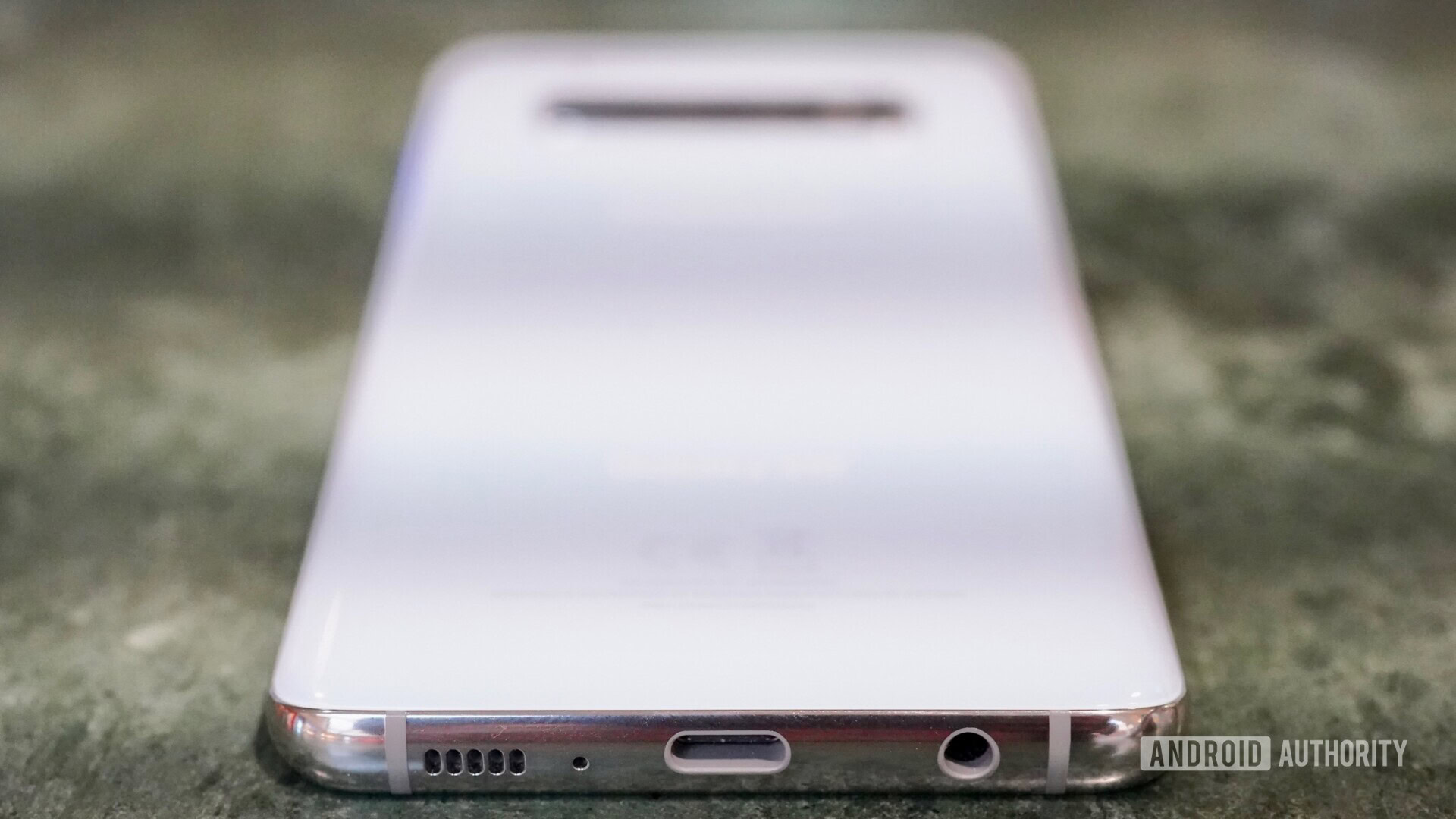
So your Samsung Galaxy S10 isn’t charging? There are a few problems that could be occurring — your device could be refusing to charge altogether, or it could simply be charging really slowly; sometimes so slowly that it’s actually using power faster than it’s gaining it.
- Try a different power source. This might seem like a really silly thing, but sometimes we assume our phones are having a problem when it’s really the wallet outlet to blame! So this is the first thing we’d check.
- Check to see if your phone is charging at all. The Ampere app can tell you if you’re getting any charge, even if it’s so slow it isn’t enough to juice up your phone. If you are getting a little charge, try turning off the phone, as this could help out until you can get new cables.
- Check the charging cable and wall adapter. If you have a spare, switch your phone’s cable and wall charger out. If you don’t have a spare, ask a friend or buy one (keep the receipt in case you need to return it later!)
If none of these tips yielded any results, check out our general guide for phone charging woes. If nothing there helps either, your next bet is to take it in for a repair or warranty replacement.
I’m getting a Galaxy S10 Moisture Detected error; what does this mean?
The obvious reason for this error is that the Samsung Galaxy S10 has detected moisture in the USB C port.
If you recently had your phone in the water, this error might not be surprising. In this case, the Galaxy S10 detected that a bit of water got into the port. Simply allowing the phone to dry will often fix this problem.
Typically small bits of water will dry on their own in a few hours, but do you want to help speed things along? Here are a few tips for drying out a wet phone. While this guide was meant for phones that aren’t waterproof, most of the tips will still apply.
What if you haven’t had your Samsung Galaxy S10 in water recently?
There are other possible causes for the Moisture Detection error beyond the obvious:
- Your phone could have built up small traces of moisture, especially if you live in a humid environment. In this case, follow the tips above for drying out the phone.
- The USB cable itself could have built up moisture or become wet somehow. In this case, either try drying the cable or simply swap it out.
- Your cable could be defective. A defective cable could potentially give a false positive error; again just swap out your cable to see if that solves the problem.
- Your phone’s USB-C port could be dirty. Bits of buildup (dirt, etc) could be causing the error. Take a small cloth and gently clean around the edges.
If none of the above solves your problem, try restarting your phone. Sometimes a simple restart does the trick. If you still have a problem either go full nuclear and reset the phone, or take it in to have it serviced.
My Samsung Galaxy S10 keeps rebooting randomly
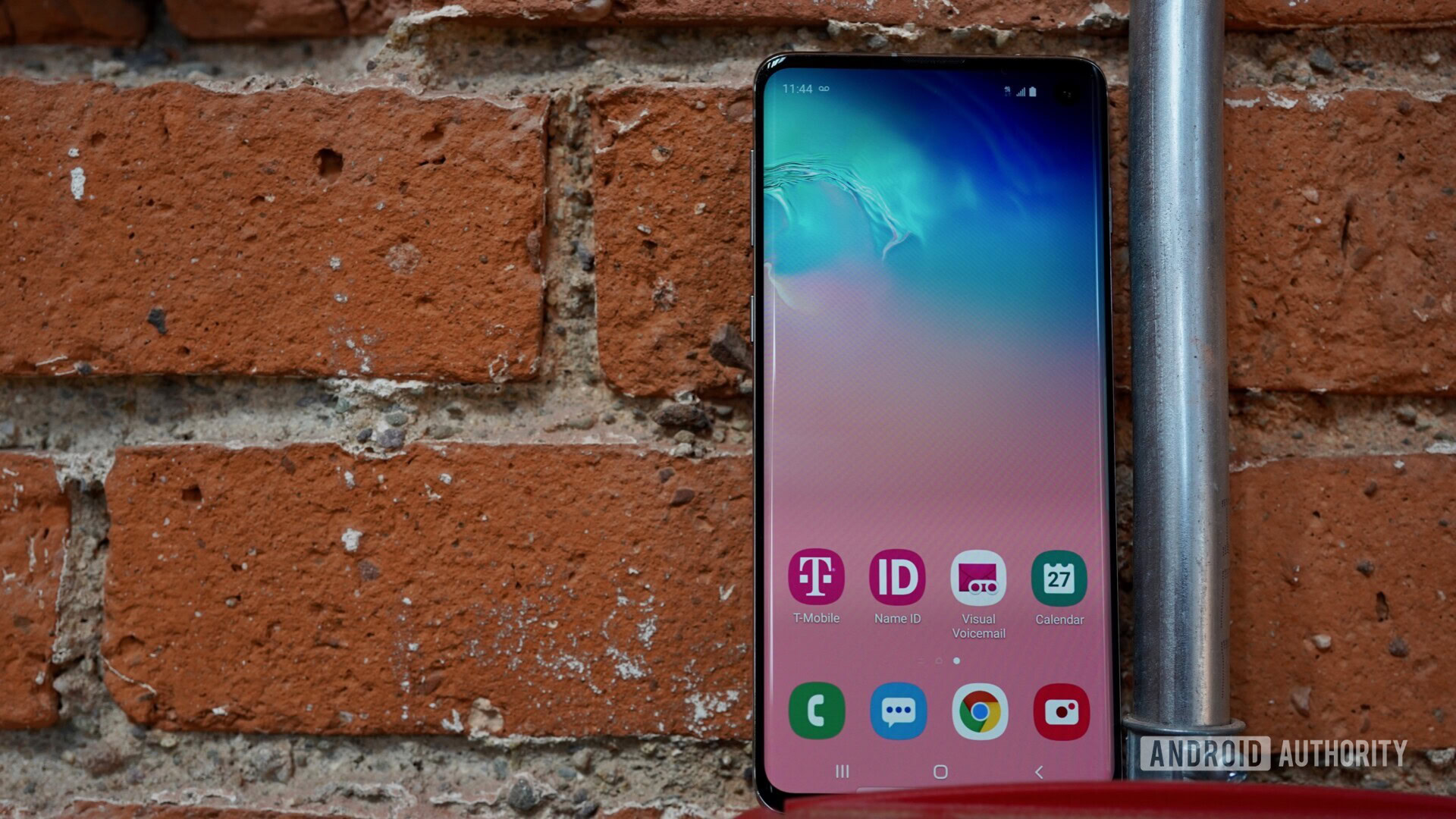
If your Samsung Galaxy S10 keeps rebooting randomly, there are a few possible causes of the issue. It could be a software problem, either due to something wrong with the OS or a rogue app causing havoc. Unfortunately, it could also be a hardware issue. The latter means your phone will need servicing.
To check for potential software causes, we recommend the following steps:
- Restart your phone. If it’s rebooting on its own, a simple restart shouldn’t fix the problem, but you’d be surprised.
- We also recommend trying a “force restart”, which is like the modern-day equivalent of pulling out your battery and putting it back in. To do this, you’ll want to press and hold the volume down and power keys for around 10 seconds.
- If that didn’t work, try booting the phone into Safe Mode. If the phone behaves in this mode, that means it’s a rogue app that is to blame.
- If nothing else worked, it’s time to go nuclear and reset your phone.
At this stage, you’ve done all you can. If you are still having issues, it’s time to send the phone in for repair.
My Samsung Galaxy S10 won’t turn on (or off) – what can I do?
Don’t panic! While your mind probably drifts to the worst-case scenario (hardware failure), this isn’t always true. Whether the Galaxy S10 won’t turn off or is on but unresponsive, your first step should be to hard reset.
- Press and hold the Power button and Volume button for 30 seconds.
- Try turning on the phone.
- If it doesn’t turn on right away, try charging for an hour or so. We highly recommend using the original charger for this step.
In many cases, this is all you need to solve the problem. If your phone’s battery was completely dead, it’s possible that you might need to simply let it charge overnight. If it still doesn’t work in the morning, it’s time to bring your phone in for servicing.
My Samsung Galaxy S10 isn’t fast charging – what’s wrong and how can I fix it?
Your Samsung Galaxy S10 is charging, but it seems to be taking longer than it should. The Galaxy S10 phones all support a fast charging feature that is supposed to speed up the time it takes to power up its battery. So if this is happening to you, what’s wrong with your Galaxy S10 and how can you enable fast charging on your phone?
The Galaxy S10 fast charging feature only works if your screen is shut off or if your entire smartphone is turned off. Make sure you have at least your display turned off, or shut down the phone entirely before you start charging up the Galaxy S10.
If you have turned off the phone’s screen — or the phone itself — and you discover that the Galaxy S10 fast charging feature is still not working, there are a couple of other things you can try to do.
1. Make sure that the charging cable you have plugged into the phone also supports the fast charging feature. A standard battery charger will not work with the fast charging support.
2. You can also make sure the fast charging feature is actually turned on in the Galaxy S10. To see if it is working, go into the Settings app, then scroll to the Device Care option. Tap on it, and then go to the Battery selection. Tap on it, then go to the More Option selection. Tap on it, then go to Settings, and finally tap on the Activate Fast charging option if it is not selected already.
Be aware that the fast charging option cannot be activated or deactivated while the Galaxy S10 phone is in the middle of charging.
Finally, if you think the Galaxy S10 is still not charging quite as fast as you thought, keep in mind that if the temperature outside the phone is higher — or if the phone itself heats up — that could affect the charging speeds.
Samsung Galaxy S10 connectivity issues
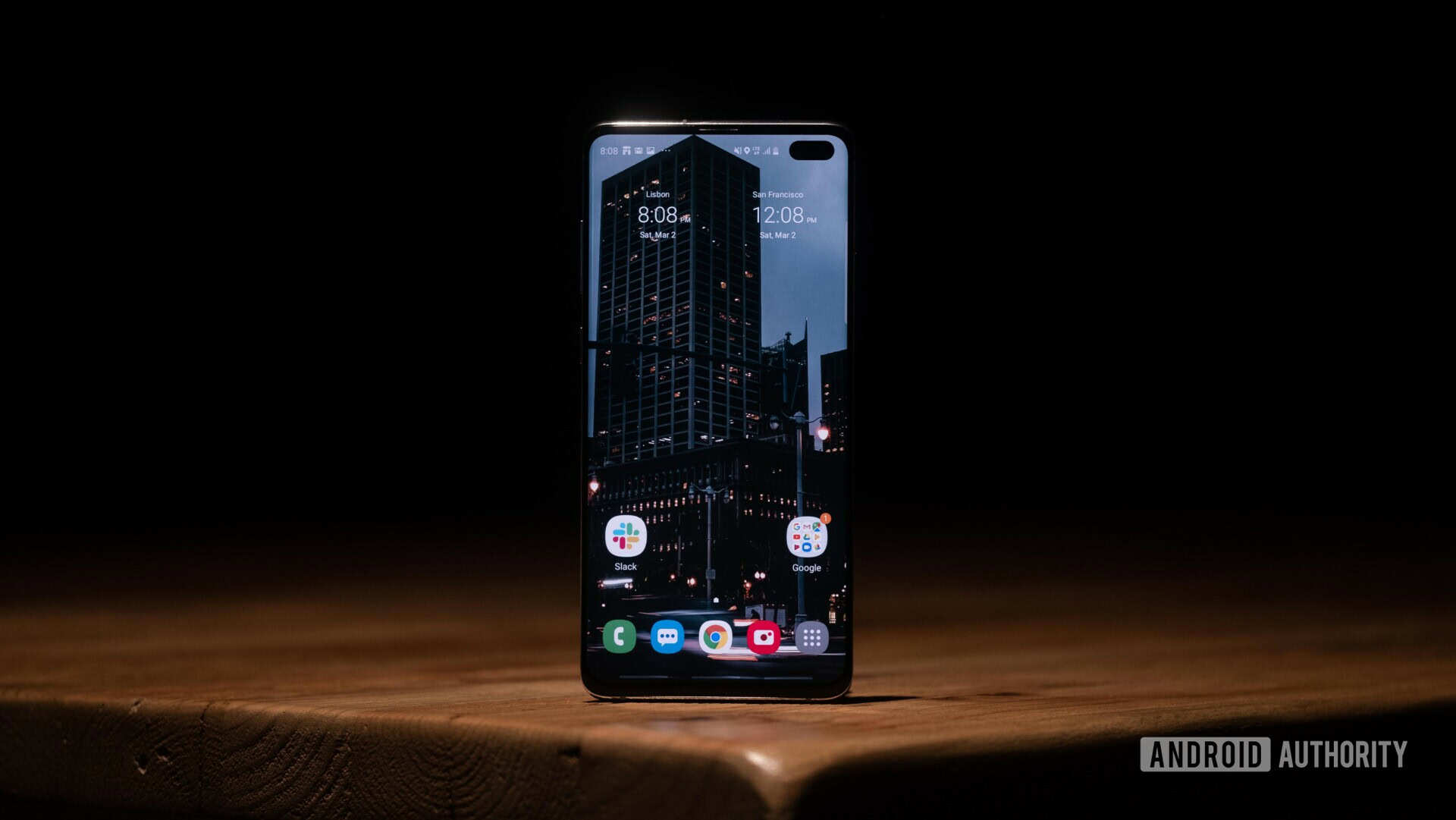
I can’t seem to connect to my Wi-Fi network with my Galaxy S10
When you want to connect to your home internet network, or if you are traveling and want to connect to a public hotspot, you might sometimes have issues with connecting with a Wi-Fi network. There are several simple and easy methods to try if you encounter such problems.
- Turn the device and the router off for at least ten seconds, then turn them back and retry the connection.
- Go to Settings > Power saving and ensure this option is turned off.
- Use the Wi-Fi Analyzer to check how crowded your channel is and switch to a better option.
- Forget the Wi-Fi connection by going to Settings > Wi-Fi and long-tapping the connection you want, then selecting “Forget”. Re-enter the details and try again.
- It’s very possible your problem is now fixed.
Didn’t do the job? Here are a few other things to try:
- Ensure you have the correct password. It seems obvious, but sometimes our problems can be as simple as a wrong password.
- Test connecting to your network with another device. If the other device is working fine, try restarting your phone. If that doesn’t fix it, you might want to consider factory resetting your device.
- Try unplugging the power to the Wi-Fi router, wait 30 seconds or so, and power it up again. If that doesn’t work, you can simply reset your Wi-Fi router.
My Samsung Galaxy S10 is having Bluetooth issues; what can I do?
If you are dealing with Galaxy S10 Bluetooth connection issues such as syncing it up with speakers or your car’s audio, the usual way to fix it is just to turn off the Bluetooth option on your phone and then turn it back on again. You can also repeat the Bluetooth pairing between the Galaxy S10 and the device you want to connect to in case that method does not work.
To clear Bluetooth settings head to Settings > Bluetooth and remove any devices you want to resync.
Other Samsung Galaxy S10 hardware issues you might encounter
There are other problems you might potentially run into that don’t fit into any of the categories above:
Having problems with the Samsung Galaxy S10 in-display fingerprint scanner?
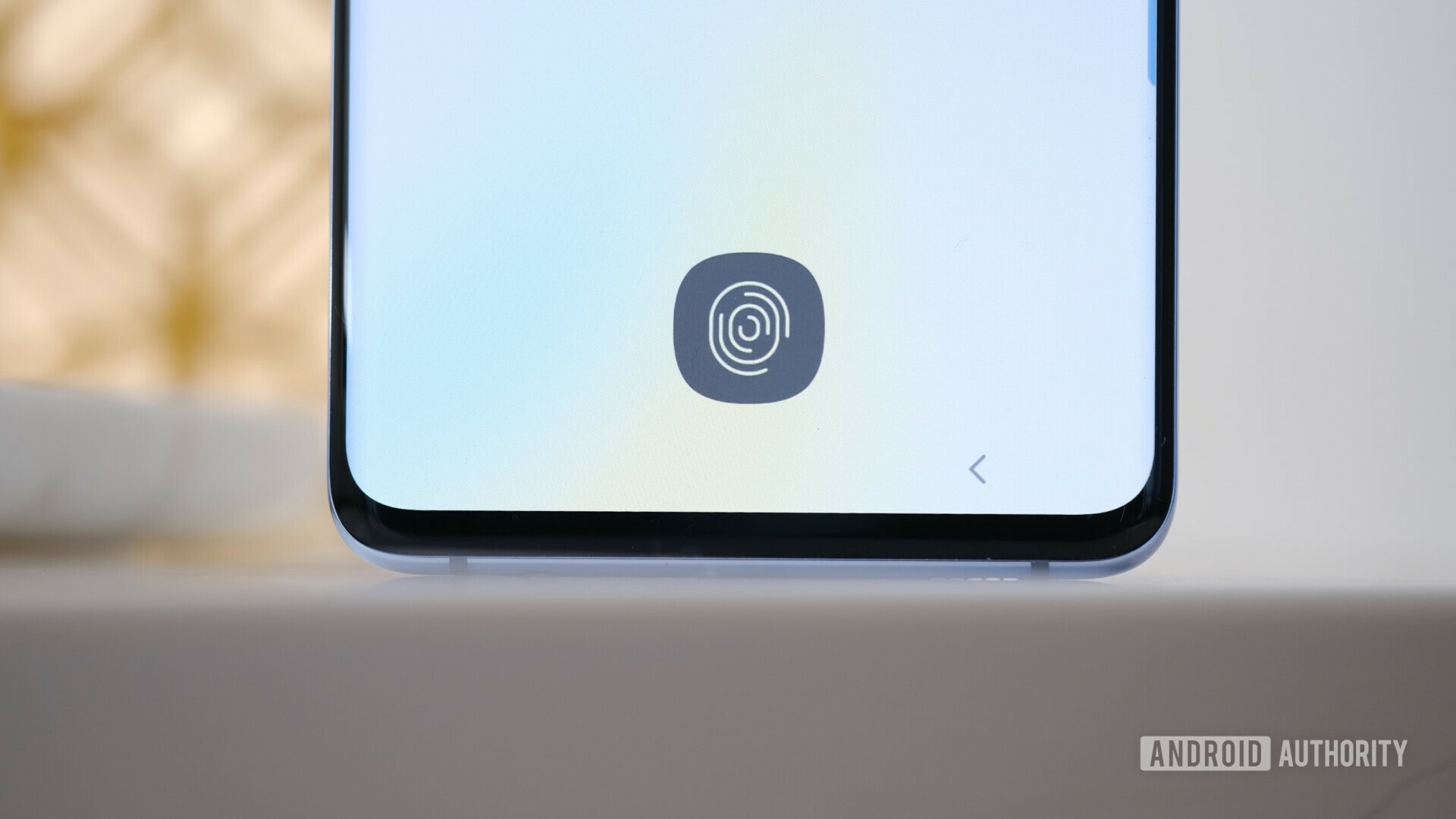
One of the biggest new features in the Samsung Galaxy S10 is the in-display ultrasonic fingerprint sensor, which is also available on the Samsung Galaxy S10 Plus. The company also decided to install a plastic screen protector for those phones so that the fingerprint scanner can be protected from scratches that might prevent it from working.
Samsung has already released an update for the Galaxy S10 that, among other things, is supposed to improve the use of the fingerprint sensor on the display. If you are still having issues using the scanner after the update, one thing you can do is just remove the pre-applied screen protector to see if that works. If not, try moving your finger on the display scanner in different locations to see if that works. Also, make sure you use the fingerprint scanner while holding the phone in one hand, so the scanner can get used to that position. You might need to re-scan your finger if you buy a new screen protector, or even a new case, for the Galaxy S10.
For more steps you can try, check out our guide on how to improve fingerprint speed on the Galaxy S10.
How do you fix Galaxy S10 Lift to Wake problems?
The Galaxy S10 has a new “lift to wake” feature, which is supposed to automatically turn the phone back on when you lift it off a table or other surface. However, sometimes this feature is accidentally turning the phone on when it is inside a person’s pants pocket. If you decide you want to get rid of this Life to Wake feature to conserve your battery, here’s how to fix it
- First, tap on Settings.
- Then scroll down to the Advanced features option, and tap on it
- Then scroll down to the Motion and gestures selection, and tap on to.
- Finally, uncheck the “Lift to wake” and also the “Double tap to wake up” options
How to reboot or factory reset your Galaxy S10
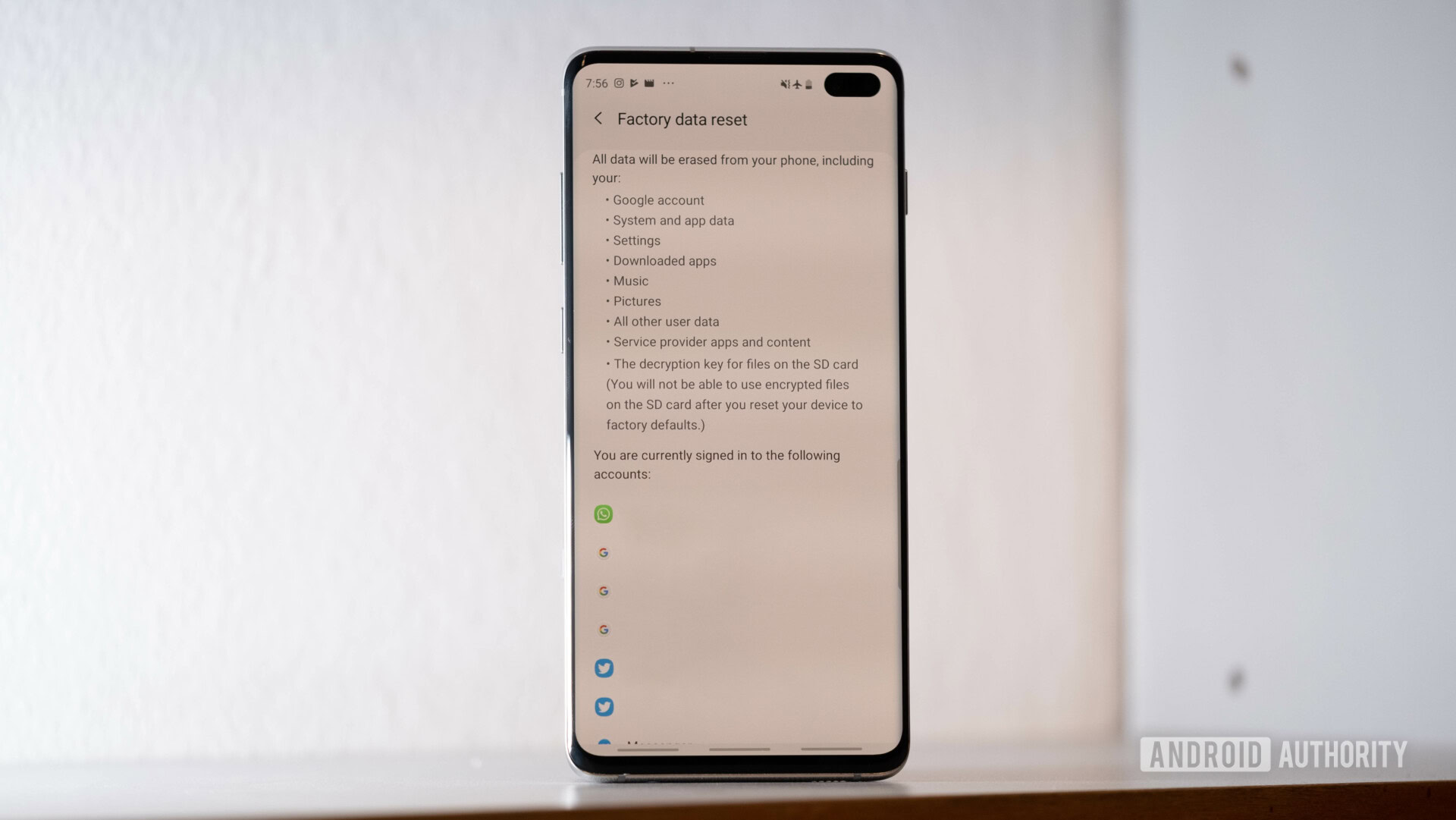
As we mentioned, you can always turn your Galaxy S10 off and then on again to help resolve many issues with the phone. Just press and hold onto the power button and then tap on the “restart” option on the screen to reboot the device. You can also set up the phone so that it can automatically restart on a specific day and time.
- First, tap on Settings.
- Then scroll down to the Device Maintenance option, and tap on it
- Then tap on the three dots on the top of the screen
- Select the Auto Restart option, and finally select the day and time for the restart to happen.
You can also do the very, very last result of a full factory reset of the Galaxy S10, which will send the phone back to where it was when you first got it out of the box. You will likely need to back up any data you want to save before you make this move. After that, here’s how to fully reset your phone.
- First, tap on Settings.
- Then scroll down to the General Management option, and tap on it
- Finally, tap on the Restart selection.
The factory settings option should not take more than a few minutes. Again, this should be undertaken only if all the other options to fix your particular problem with the Galaxy S10 have not worked.